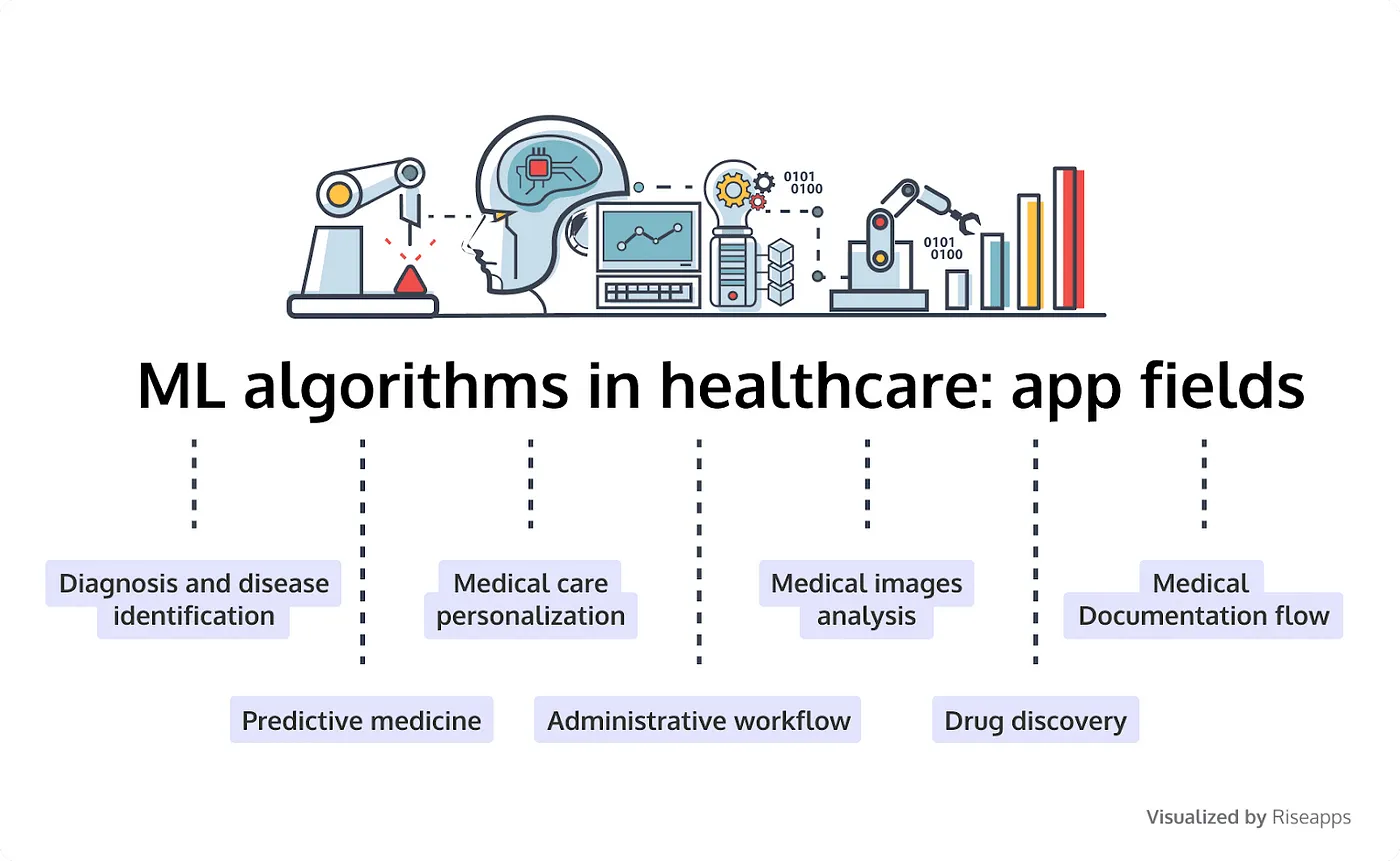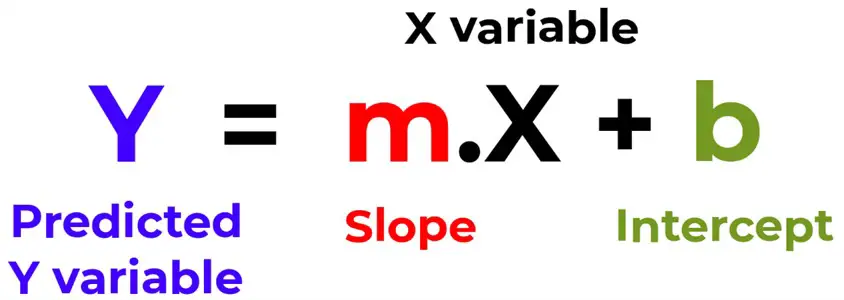
Recent Developments and Innovations in Machine Learning within the Healthcare Sector
Introduction of Machine Learning Merging with Healthcare
Have you ever wondered how the healthcare sector is evolving with the aid of technology? Well, machine learning (ML) is one of the heroes in this story. It’s like having a super-intelligent assistant that can sift through massive amounts of data in a blink, helping doctors and healthcare providers make better decisions.
Imagine going back a few decades when computers were just gigantic calculators. Back then, ML in medicine was more about basic data analysis. Fast forward to today; it’s a whole new ball game. ML algorithms can now do things like diagnosing diseases, predicting patient outcomes, and creating personalized treatment plans. It’s like having a crystal ball but backed by science and data!
The impact of ML in healthcare is enormous – it’s like finding a needle in a haystack, but much faster and more efficiently. For example, consider all those X-rays and medical records – they’re mostly unstructured and hard to process manually. ML steps in here, helping to organize and make sense of this data, which would otherwise remain underutilized.
Embrace a healthier tech lifestyle with Principals of Living a Healthy Lifestyle.
Why is there a need for machine learning in healthcare?
Addressing Healthcare Challenges with Machine Learning
The healthcare sector, particularly in the US, faces several hurdles. Think about the high costs, delays in getting healthcare, and the labyrinth of insurance and administrative tasks. ML offers a beacon of hope to navigate these challenges. Plus, the cost of healthcare in the US can be jaw-dropping. Here’s where ML comes in – it’s like having a financial advisor for the healthcare system, finding ways to cut costs without compromising on care. In addition, In healthcare, time is often of the essence. Delays can be harmful to patients. ML helps speed up diagnosis and treatment processes, much like a fast-forward button in a movie, but for real-life healthcare scenarios. Lastly, dealing with insurance fraud and administrative tasks is a headache for healthcare providers. ML is like a detective here, spotting patterns that hint at fraud and simplifying paperwork.
Feel the innovation in Consistent Hashing and Load Balancing with Consistent Hashing and Load Balancing.
Machine Learning Solutions to Healthcare Challenges
ML algorithms can analyze mountains of data to foresee health trends and outcomes. This not only helps allocate resources more efficiently but could also potentially bring down healthcare costs.

Figure 1: Machine Learning Solutions in Healthcare. Source: https://riseapps.co/machine-learning-in-healthcare/
Furthermore, ML can process patient data quickly and accurately, aiding in timely and precise diagnoses. It’s akin to having an assistant who never sleeps and always has the correct answer. Also, by identifying suspicious patterns, ML algorithms can help detect and prevent insurance fraud. It’s like having a guard that’s always vigilant.
Get excited about learning LRU Cache at LRU Cache.
Diverse Applications of ML in Different Medical Fields
- Mental Health: Early Detection and Personalized Care. In mental health, ML can be a game-changer. It can analyze data to pick up early signs of mental health issues and help in crafting personalized care plans.
- Cancer Diagnosis: Enhancing Accuracy and Speed In cancer diagnosis, speed and accuracy are crucial. ML enhances both by efficiently analyzing medical images and patient data.
- Chronic Diseases: Predictive Models for Better Management. For chronic diseases, ML can create models that predict future health issues. This helps in better disease management and preventive care.
Machine Learning in the US Healthcare Market
The US healthcare market is increasingly adopting ML. It’s being used in patient care, diagnosis, and even administrative tasks. ML is reshaping how healthcare is delivered in the US. It’s influencing cost, access, and efficiency, making healthcare more streamlined and affordable.

Figure 2: Global Healthcare Market Predictions. Source: https://market.us/report/connected-healthcare-market/
Ethical Considerations and Challenges in ML Healthcare
While ML brings many benefits, it also raises concerns about data privacy and security. It’s crucial to ensure that patient data is protected in the deployment of ML in healthcare. There’s also the issue of bias in ML algorithms. Unchecked, this could lead to unethical outcomes. Thus, it’s essential to ensure fairness and ethical use in healthcare ML applications.
Be fascinated by database indexing in a deep dive into B and B+ Trees and how they are useful for indexing in Databases.
The Critical Role of Data in Healthcare ML
For ML models to be effective, they need high-quality data. This means diverse, well-labeled datasets are key for accurate and reliable ML applications in healthcare. Integrating different data sources, like electronic health records and data from wearable devices, is vital. However, this integration faces challenges, such as ensuring data privacy and standardization.
Get passionate about system design with Tips Approach to Tackle System Design.
Exploring Machine Learning Technologies in Healthcare
Deep Learning and Neural Networks have revolutionized the field of ML in healthcare. Think of Neural Networks as a maze of interconnected neurons, each processing information and learning from data inputs. They can recognize complex patterns and make predictions based on past data.
For instance, a simple neural network might be represented by the equation:
output = activation(weight input + bias)
In this equation:
- Weight is the value that multiplies the input, signifying its importance.
- Input is the data fed into the network.
- Bias is an additional parameter that adjusts the output.
- Activation is a function that determines the output of the neural network node.
These networks, especially when layered in deep learning architectures, can analyze vast amounts of healthcare data, such as patient records, to predict outcomes more accurately.
Natural Language Processing for Medical Record Analysis
Natural Language Processing (NLP) is another ML technology making a mark in healthcare. Imagine a system that can read and understand medical records just like a human – that’s NLP for you. It can analyze patient histories, doctors’ notes, and research papers, extracting vital information that aids in patient care. For example, NLP algorithms can be used to extract relevant data from unstructured text in patient records, transforming it into a structured format for easier analysis.
Be amazed by the world of Hadoop in the Hadoop Ecosystem for Beginners.
Understanding Basic Algorithms with Equations
Let’s break down a basic ML algorithm using a simple linear regression equation:
y = mx + b

Figure 3: Simple Linear Regression Equation. Source: https://toptipbio.com/linear-regression-test-r/
Here, ‘y’ represents the outcome we want to predict, ‘m’ is the slope of the line (showing the relationship between variables), ‘x’ is the input variable, and ‘b’ is the y-intercept. In healthcare, such an equation could be used to predict patient outcomes based on various input factors.
Practical Applications of These Equations
These simple equations form the backbone of more complex ML models in healthcare. For instance, predicting the likelihood of a disease based on patient symptoms and historical data can be approached using such linear models before moving to more complex algorithms.
Feel empowered with SQL indexing knowledge from What are Indexes in SQL and Why Do We Need Them?
The Critical Role of Data in Healthcare ML
Quality data is the bedrock of effective ML applications in healthcare. The accuracy of predictions and insights drawn from ML models heavily depends on the quality of data fed into them. This includes ensuring the data is diverse, well-labeled, and representative of the population.
The integration of diverse data sources, such as electronic health records (EHRs), genomic data, and patient-generated data from wearables, presents both opportunities and challenges. One key challenge is ensuring data privacy and security while making the most of this rich information resource.
Get inspired by the possibilities of LSTM Networks at Learn everything there is to LSTM Network from What is LSTM and Its Applications?
Exploring Machine Learning Technologies in Healthcare
Deep learning, a subset of ML, leverages neural networks with many layers (hence “deep”) to analyze complex patterns in large datasets. In healthcare, this means deep learning models can, for instance, analyze medical images for signs of disease more accurately than ever before.
NLP tools in healthcare can read and interpret patient records, extracting valuable insights that can aid in diagnosis and treatment. It’s like having a digital assistant who reads and summarizes volumes of medical texts, identifying key information that can help in patient care.
Creating an Illustrative Diagram of ML Concepts in Healthcare

Figure 4: Different data generation sources in healthcare. Source: https://www.mdpi.com/2227-7390/9/22/2970
It’s helpful to visualize how ML fits into the broader healthcare landscape. An illustrative diagram (Figure above) could depict various data inputs (like EHRs, Environmental data, imaging data, etc.) flowing into an ML system, which then processes this information to provide outputs like diagnostic assistance, treatment recommendations, and predictive analytics.
Experience the excitement of learning about data storage at How is Data Stored and Retrieved Inside a Disk in a Computer?
Decoding Healthcare ML through Code
Example Code Snippet and Explanation
Let’s consider a simple Python example using the ‘scikit-learn’ library to create a linear regression model:
Python
from sklearn.linear_model import LinearRegression
import numpy as np
# Sample data: Patient age and recovery days
X = np.array([[20], [30], [40], [50], [60]]) # Patient ages
y = np.array([30, 25, 20, 15, 10]) # Days to recovery
# Creating and training the model
model = LinearRegression()
model.fit(X, y)
# Predicting recovery days for a 45-year-old patient
predicted_recovery_days = model.predict(np.array([[45]]))
print(f”Predicted recovery days: {predicted_recovery_days[0]}”)
In this Python snippet, we’re using a basic linear regression model from the ‘scikit-learn’ library. The model is trained on hypothetical data representing patient ages (‘X’) and their corresponding recovery days (‘y’). This kind of model could be used in healthcare to predict outcomes like recovery time based on patient age or other factors.

Figure 5: Linear Regression Model Diagram. Source: https://www.javatpoint.com/linear-regression-in-machine-learning
The Intersection of Coding and Healthcare ML
The intersection of coding and healthcare ML is crucial. It allows healthcare professionals and data scientists to create models that can predict patient outcomes, analyze trends, and even assist in diagnosing diseases. As machine learning and coding continue to evolve, their role in healthcare will become even more integral, offering possibilities like personalized medicine and improved healthcare delivery.
Conclusion and Envisioning the Future of Machine Learning in Healthcare
As we look to the future, machine learning in healthcare is poised for even more remarkable innovations. We might see advanced algorithms that can predict diseases even before symptoms appear or virtual health assistants providing real-time advice. The integration of AI and ML with genomics could lead to breakthroughs in personalized medicine.
While the potential of ML in healthcare is enormous, it’s essential to balance optimism with a realistic understanding of its limitations. Issues like data privacy, ethical concerns, and the need for large, diverse datasets must be addressed. But with careful consideration and ongoing innovation, the future of healthcare powered by ML looks bright and promising.
Feel the thrill of WhatsApp System Design at WhatsApp System Design.

Recent Comments